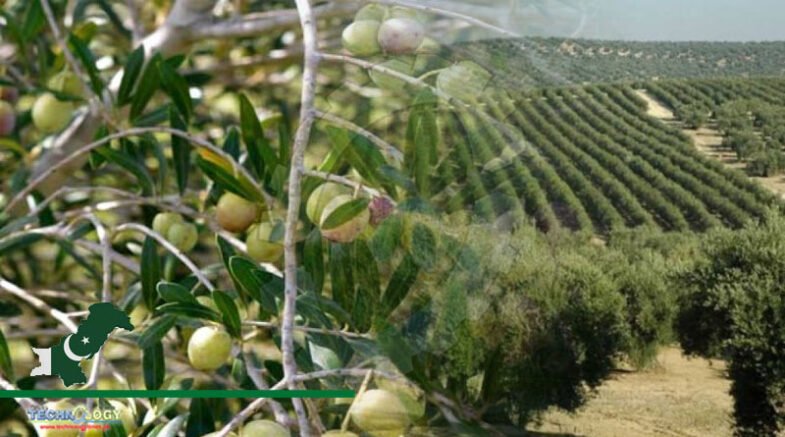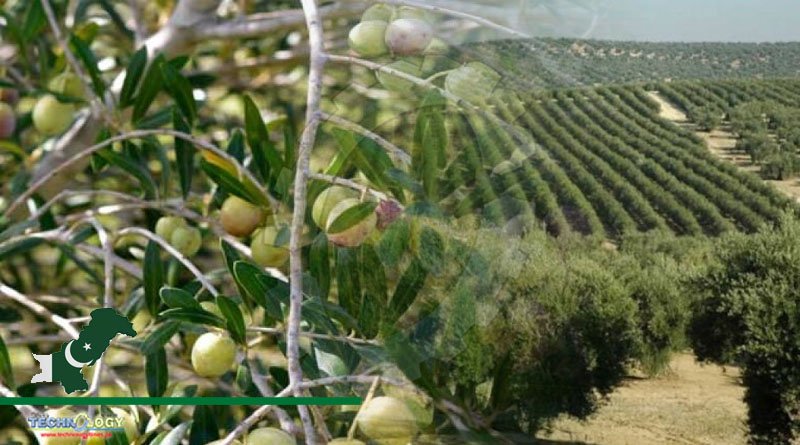The plants in Sajid’s field also have slips from Middle Eastern, Italian, Turkish, and Spanish olive trees. Experts in agriculture claim that Pakistan’s climate is ideal for growing olives.

Many farmers in Khyber Pakhtunkhwa, where the land is said to be fertile and suitable for this fruit, now rely on their olive farming for a living. In his native Bajaur tribal district, quadriplegic farmer Sajid Khan is frequently spotted caring for olive trees.
The plants in Sajid’s field also have slips from Middle Eastern, Italian, Turkish, and Spanish olive trees. Experts in agriculture claim that Pakistan’s climate is ideal for growing olives.
One plant can produce 150 kg of olives, and 50 kg of olives can yield nearly 6 litres of oil, but one litre of oil costs more than Rs 2000 in the market, according to Sajid.
He also mentioned how many people enjoyed using olive oil in their cooking and in the making of pickles.
Spain produces 5,965,080 tonnes of olives annually, making it the top producer in the world. With an output of 2,194,110 tonnes annually, Italy comes in second place.
According to reports, Spain has 2.6 million hectares of land used for olive farming, making it the nation that produces the most olives globally.
Agriculturists estimate that Pakistan has 4.4 million hectares of land that is suitable for the cultivation of olives. When crushed by machines within 24 hours of being plucked from the plant, olives can yield the most oil.
According to a worker in Bajaur’s agriculture department, the crushing plant they installed crushed 50 kg of olives in just one hour. “Few locals were familiar with olives when they first appeared. But as they started consuming it, demand increased.”
Over 80 million olive trees can be found in Pakistan, with about 10 million of those trees located in the Bajaur tribal district and its surrounding areas.
Speaking to the media, Dr. Sartaj Alam said that since the government had become aware that olives could be grown in many parts of Pakistan, it had begun to put more of an emphasis on the crop. It was primarily cultivated in the Middle East, Spain, Italy, etc. However, now that it can be grown in many parts of the nation, including Peshawar division and Hazara division, Pakistan has also begun planting it, he continued.
Pakistan reportedly imports cooking oil worth $2 billion every year. The country can generate income by paying proper attention to the olive industry and providing the farmers with the necessary support, but it can also raise living standards throughout the nation.
